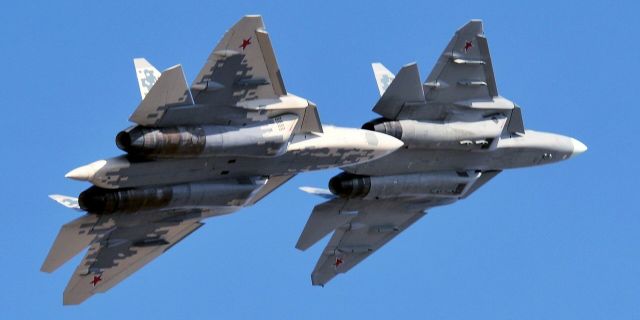TNI: in the USA, the characteristics of the Su-57 and F-16 fighters were compared
As soon as Kiev starts using the F-16, Moscow will certainly transfer Su-57 stealth fighters to the conflict zone in response, writes TNI. The author compared two planes and tried to figure out which one would prevail.
Su-57 vs F-16 in Ukraine
A few months ago, US President Joe Biden suddenly changed his mind and announced that the United States would transfer the F-16 Fighting Falcon to Ukraine and help train pilots and ground personnel. At the G7 summit in Hiroshima, America finally responded to the request that Ukrainian President Vladimir Zelensky had voiced from the very beginning of the conflict.
For many months, the United States justified its unwillingness to provide these fourth-generation fighters to Kiev with limited arsenals and a long training process. Ukraine, whose fleet mainly consists of outdated Soviet-era aircraft, welcomed this sudden shift in Washington's approach.
Now that Kiev will be able to use these modern fighters, Moscow can turn to the Su-57 stealth aircraft as an “antidote”.
The history of the Su-57
Until now, in this conflict, Moscow has kept its fifth-generation Su-57 at a distance. Although the Kremlin has long touted this fighter platform as the best of the best, to what extent its flight and tactical capabilities match Moscow's statements remains to be seen.
The twin-engine multi-purpose stealth fighter was developed by the Russian defense giant Sukhoi in the early 2000s, but the general concept arose much earlier. Even at the height of the Cold War, the USSR felt the need for a next-generation fighter that would replace the Su-27 and MiG-29 in tactical operations on the front line. After the collapse of the Soviet Union, the Russian Ministry of Defense launched the PAK FA program, which eventually culminated in the appearance of the Su-57.
Features and capabilities
Named Felon, or “Criminal,” according to the NATO classification, the Su-57 is equipped with stealth technology. In a 2020 analysis, the Royal Institute of Defense Studies called the Su-57 an “invisibility with potential,” while noting that it has not yet turned into a “reliable front-line weapons system.”
According to Air Force Technology magazine, the aircraft is equipped with jet engines with a three-dimensional thrust vector to increase maneuverability. “The short run-up, network-centricity and multi-purpose capabilities, along with other characteristics, make it possible to attribute it to the fifth generation.”
In addition to air-to-air missiles, the Su-57 is equipped with air-to-surface missiles for hitting ground targets and long-range air combat. Thanks to two internal armament compartments, the Su-57 can carry up to eight K-77M air-to-air missiles. The aircraft is equipped with turbofan engines “product 117” or AL-41F1, which, according to Moscow, will soon be replaced by a more modern development “product 30". However, since Moscow is experiencing financial difficulties due to sanctions, the modernization of the engine, contrary to the wishes of the Kremlin, may be delayed.
Su-57 vs F-16?
For all its shortcomings in a number of areas, the Su-57 has a number of advantages over the F-16. Retired Indian Air Force pilot Vijainder Thakur said that the fifth-generation Russian aircraft can synchronize with ground radars and thus provide the advantage of the first launch over the fourth-generation F-16.
Therefore, as soon as Kiev starts using F-16s (and they are expected to be delivered in the coming months), Moscow will certainly transfer Su-57 stealth fighters to the conflict zone in response.
Author of the article: Maya Carlin

